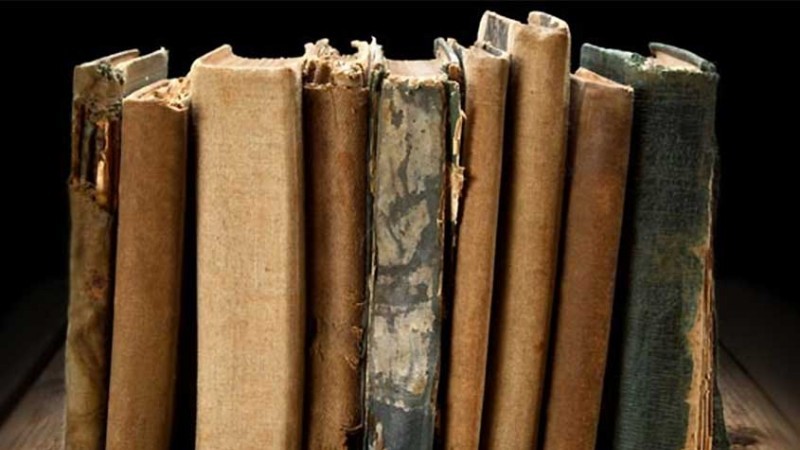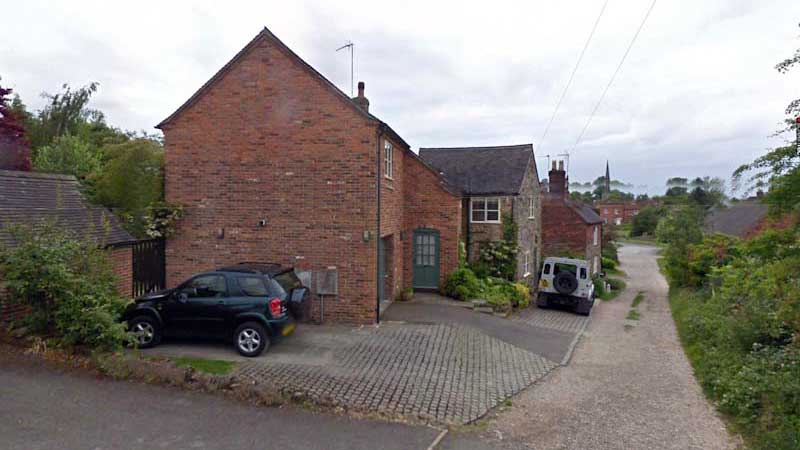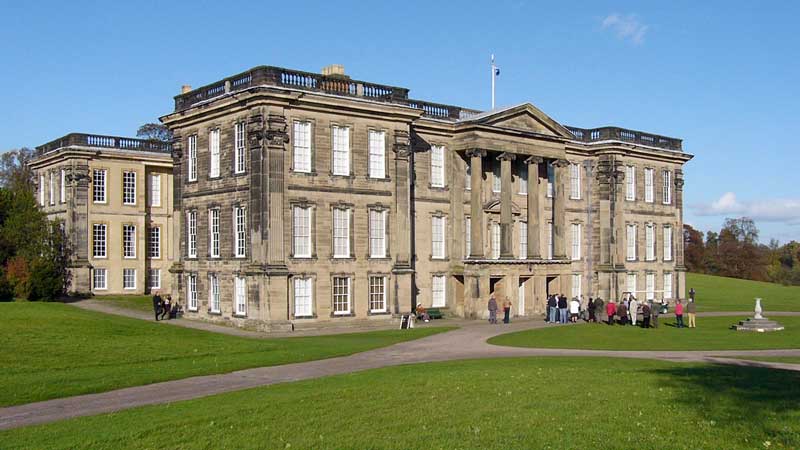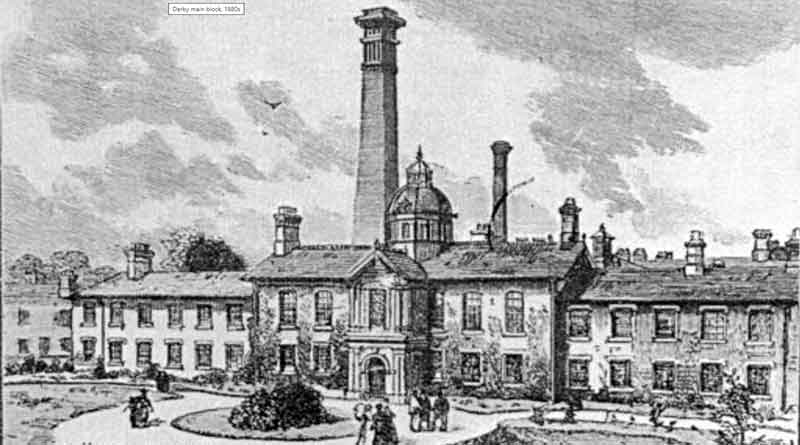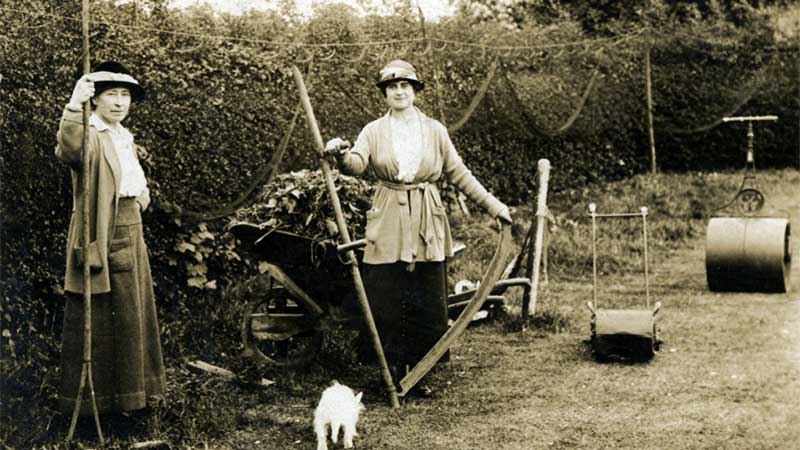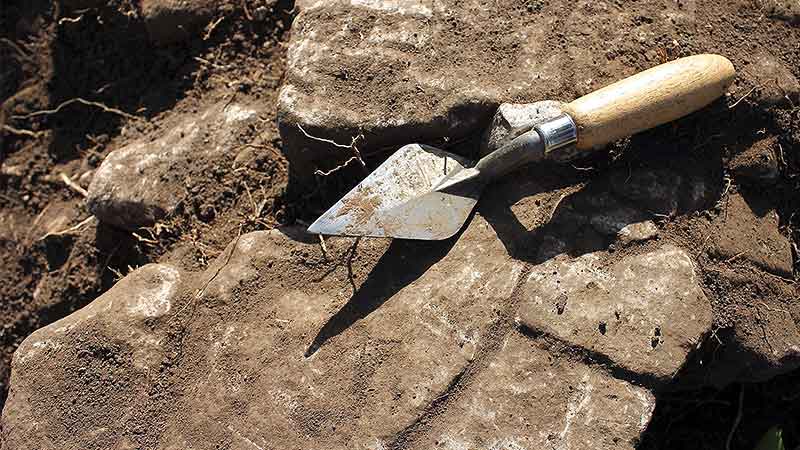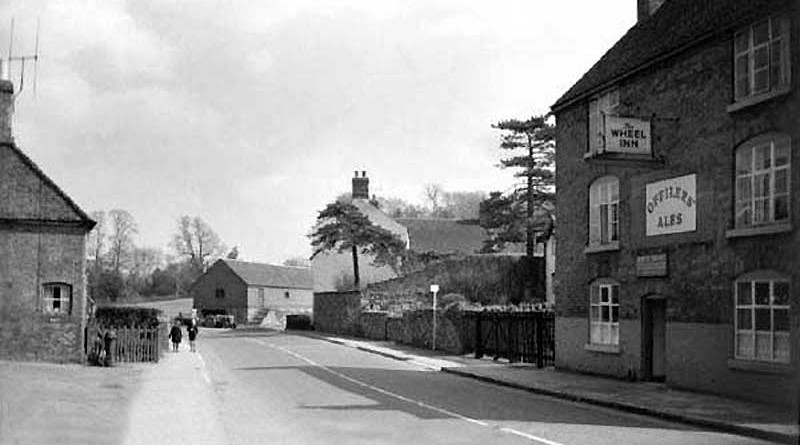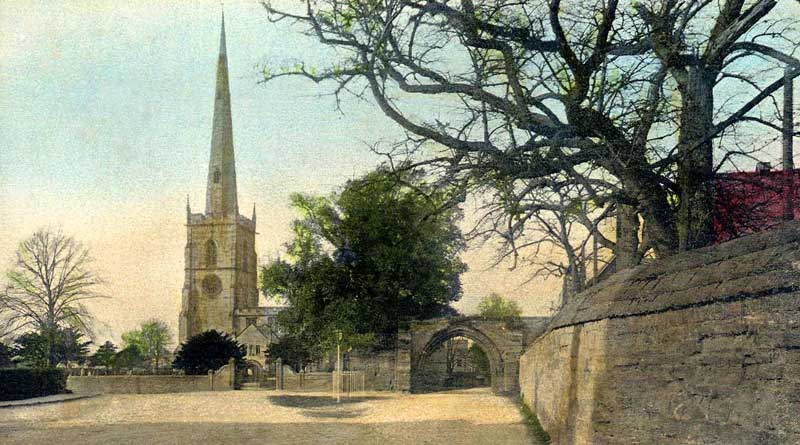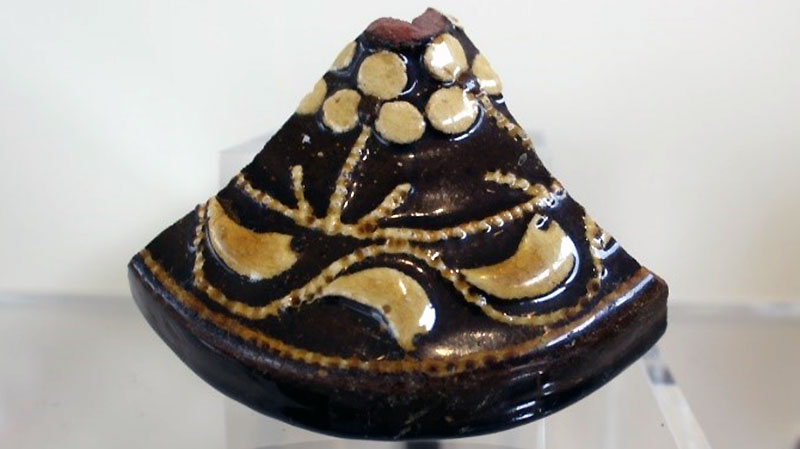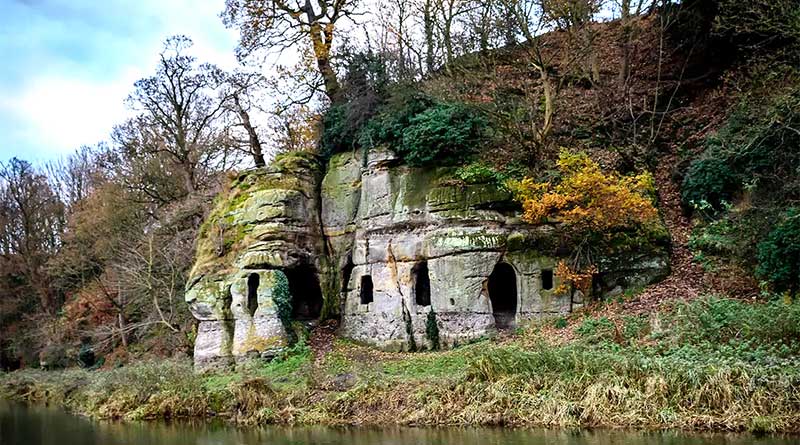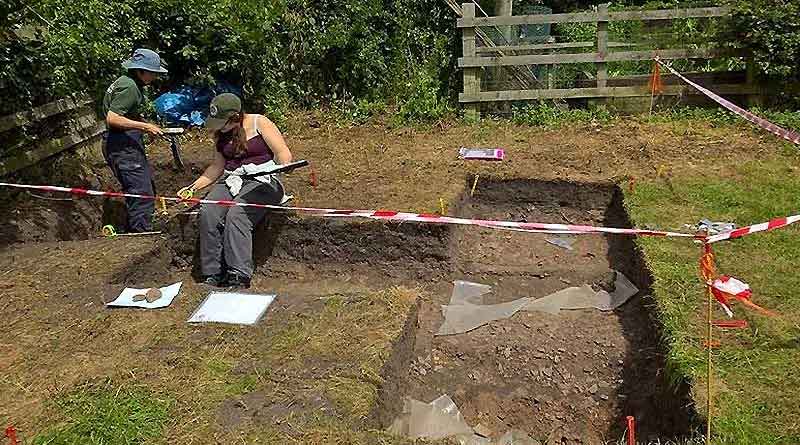-
/
Before 1536, Calke was an Augustinian Priory, a cell of Repton Priory. Between 1536 and 1541 King Henry VIII closed every monastery and nunnery in England and Wales. He did this via the Act of Supremacy in 1534 making himself the Supreme Head of the Church of England, and a further two acts in 1536 and 1539…
-
/
This wonderful photograph was recently found in a drawer at Calke Abbey. It is proving to be quite a mystery. It had at some time in the past been torn in half, but Bryan has done an excellent job of digitally repairing it. The elderly lady in black at the front of the photo bears…
-
/
When Calke was an Augustinian Priory, and long before Adam Smith spelt it out for us in the late 18th Century, Britain was becoming wealthy through trade. In the Age of Discovery (c. 1418 – c. 1620), merchant adventurers were finding new routes to facilitate trade with the wider world. In those early times, as now,…
-
/
The Dissolution of the Monasteries took place between 1536 – 1541 when Henry VIII disbanded monasteries, priories, convents and friaries in England, Wales and Ireland. He appropriated their income, disposed of their assets and many monastic properties were sold off to fund his military campaigns Under Crown Agent Thomas Cromwell for Henry VIII, the Valor…
-
/
After the reinstatement of Repton Priory and Prior John Young in 1537, the 99-year Lease of Calke issued to John Preste, became a legally binding document.[1] The fact that the first 59 years were prepaid made it an extremely valuable target of greed in the following years. All seemed well until 1538 when Thomas Cromwell…
-
/
I have collected a considerable amount of local source material which may be useful to anyone engaged in genealogical research. Records The following records can be name searched and the results emailed back in Microsoft Word format:- The Census Returns for the following years 1841, 1851, 1861, 1871, 1881 & 1891 and coming soon 1901Except…
-
/
Could matters get any worse for Frances? The answer is ‘Yes.’ It starts with Frances being summoned to attend Lichfield Consistory Court, on 29th March 1558 – as the legality of her marriage to William Bradbourne is under question. Edward Langham filed a suit, claiming that he and Frances had become engaged months before this marriage…
-
/
To continue the story of Frances – from 1561 – 1572 Sadly Frances’ life suffers another setback when her mother Alice dies in 1561. Alice realised, all too late, the type of a man she had married in 1547, as all her personal wealth and responsibilities were taken by Richard Blackwall – his ‘rights of…
-
/
Court Cases for the Ownership of the Calke Lease from 1573 to 1585 The questions arising from Frances dying intestate are Executors of Richard Blackwall – Richard Needham, Ralph Heape, James Wetton, William Barwell – still holding the Lease – believed they were the rightful owners. This was the start of many court cases –…
-
/
In 2018 I wrote about my ancestors “the Melbourne Dexters.” My gt x 3 grandparents were William Bull Dexter b 1785 in Shepshed and died 1850 in Melbourne and Jane Vigor Smedley born 1792 in Melbourne. William and Jane married in Melbourne Church on 4th March 1811. In 1837, William obtained a patent for applying…
-
/
Controller Richard Wendsley, Owners Robert Bainbridge then Henry Harpur Before continuing with the Lease story, we need to remind ourselves who were the Freeholders of Calke – from 1537 to 1584. The Freehold story of Calke is one of interest and limitations, due to the 99-year lease and the pre-paid 59 Years being in place…
-
/
Thomas was born in Ticknall in 1825 to John and Elizabeth Dunnicliffe.[1] (Elizabeth was part of the vast Banton family of Ticknall; this wouldn’t be the only connection Thomas has with the Bantons.) The Dunnicliffes go back, as far as I can tell, to Thomas’s grandfather Samuel who was born in Ticknall in 1754. Thomas’s…
-
/
Who lived at Calke Abbey? Were they Harpurs, Crewes, or Harpur-Crewes? The truth is, they all did. Over almost 300 years, from 1622 when Mr Henry Harpur Esq., third son of Sir John Harpur of Swarkestone Hall moved to Calke House, or Caulk Hall (it wasn’t only the Harpur Crewe family who changed) they used…
-
/
Martha and Thomas, both garden labourers, eventually become closely linked with one another, but each has a full life before they meet so we’ll look at each individually first. Martha Martha was born in 1805 in Ticknall to John and Sarah Saunders, one of 8 children.[1] Aged 21 in 1826 she married Samuel Hickinbotham, an…
-
/
Thomas was a Ticknall boy through and through, with the Mason line going back in the village to his g.g.grandfather, William in 1685.[1] Thomas as born in 1807 to Francis and Mary.[2] Like many of the men in Ticknall at the time, Francis was a Labourer.[3] Thomas followed his father and was a Labourer all…
-
/
After 11 years of archaeological and historical research on the Ticknall Potteries, we have run out of sites for further investigation. We always knew this would be the case as we were initially only funded for three years, but we have managed to keep going for a lot longer thanks to all the people who…
-
/
The Parish Church of St George in Ticknall is an example of the work of Derby architect Henry Isaac Stevens and was built to replace the old church dedicated to St Thomas Becket. It was consecrated by the Bishop of Hereford Rt. Revd. Thomas Musgrave on 6 October 1842. Remnants of the previous church stand…
-
/
Following on from my last article about illegitimacy, this piece looks at three cases of illegitimacy within the same family; mother, daughter and granddaughter. Each has a different conclusion. In the case of the granddaughter, we question how mothers of newborn babies were treated, when they were obviously struggling with what we would see today…
-
/
In the course of my research into the servants at Calke Abbey, I have come across numerous cases of illegitimacy. I’m sure we all know about the shame and stigma which was attached to single mothers in Victorian times and beyond, but it wasn’t always the case. Prior to a New Poor Law introduced in…
-
/
Before we get into the details of this elopement, let’s delve into the background of these two ‘love birds’ and try to discover a bit more about them. Thomas Buxton was born in Bradbourne Derbyshire in 1806. He was baptised in the Parish Church there on 17th Nov 1806[1] to Thomas, a moderately successful farmer,…
-
/
In 1857 in the early hours of Monday 12th January, on a cold, clear moonlit night, the quiet and peaceful atmosphere of the fields between Calke and Smisby was broken by the shouts, screams and thuds of a fight between about 12 poachers and 7 gamekeepers. Poaching was an almost normal part of rural life…
-
/
TARG activities are re-starting and notices will be sent to members. Unfortunately, there will be no Springfield Barn Dig in 2021 but we have plans for sorting finds and pot drawing sessions, including from the 2010 dig.
-
/
The village of Ticknall’s name was derived from its landscape setting and land use. The first syllable ‘tic’ reflects the pastoral economy of the time showing that it was grazed by goats. There were still goatherds in the area in the 16th century. The second syllable is ‘halh’ (Saxon) = a nook or hollow of…
-
/
St Wystan’s parish church in Repton is a great survivor. Having seen the destruction of the monastery in the Viking raid of 873/4 and suffered serious damage itself, St Wystan’s recovered to be adopted by the Medieval Priory (founded for the Canons at Calke) as the church for the local community and outlasted its dissolution…
-
/
Visitors to Ticknall often ask about the cast iron water spouts that are seen in various places in the village. They were part of a public water supply installed on the instruction of Sir Vauncey Harpur-Crewe in 1914. The pillar fountains are Grade II Listed and were manufactured by Glenfield and Kennedy Ltd of Kilmarnock.…
-
/
We all know about having a special mug with a design that really means something to its owner. A football club’s logo is perhaps the commonest example these days, so you can show the world who you support. Football clubs inspire intense, often lifelong, loyalty through good times and bad. They generate a sense of…
-
/
The Grade II listed Anchor Church has long been known as an Anchorite Cell. However, a recent study suggests that the dwelling, which includes a small oratory – or chapel – is likely to be from early medieval times. Archaeologists from the Royal Agricultural University’s (RAU) newly-formed Cultural Heritage Institute, working with colleagues from Wessex…
-
/
We met for coffee at the Bull’s Head, where, with the aid of a map, Janet gave us a brief history of Repton from Anglo Saxons, Vikings and their eventual settlement in 874, the changing course of the river, its mills, ferries and fords and the development of the village. This was followed by a…
-
/
Nowadays we take a clean, constant water supply for granted. Yet it is surprising how recently this came to be the case. Twenty years ago, Roy Hammerton wrote a treatise on the water supply in Ticknall and Calke for a booklet but this was never published. In 2016 we published the section on ‘Ticknall Water…
-
/
This old photo of the original Dexter’s Cottage was taken from the Limeyards immediately opposite the weighbridge office which is now part of the present Limeyards Stables and shows the main road servicing the Limeyards. More about the Dexter family. The old village of Tichenhalle is mentioned in the Domesday Book, and probably existed from…
-
/
Following the 2016 and 2018 excavations, the primary purpose of the 2019 excavation was to reopen the principal 2018 dig site and its adjacent area in order to prove (or otherwise) the existence of one or more kilns. Last year’s dig found materials and finds consistent with a close proximity to a kiln structure. This…
-
/
Another First for Ticknall! In 2014 Ticknall Archaeological Research Group uncovered the first and so far only production site for Ticknall Bottles. This pottery form has previously always been referred to as Martincamp Flasks and thought to be imported from Normandy. Although this is the familiar shape known as the Martincamp Flask, an unusual Midlands…
-
/
Visitors to Calke Abbey are sometimes puzzled by the names that occur in the last few generations of the Harpur Crewe family; for instance Airmyne and Vauncey. They seem to have been revived by Sir John, the 9th baron, who appears to have had an interest in the family background. Airmyne Most sources seem to…
-
/
We started in 2010 with a ‘Your Heritage’ grant from the Heritage Lottery Fund over 3 years, to investigate the archaeology of Ticknall’s potteries and its landscape history. After ten years, the Ticknall Archaeological Research Group is still going strong and we have extended the range of activities. We still do digs on pottery sites,…
-
/
Winifred Harpur Crewe, always known as Winnie, was born into a privileged life in 1879. The second daughter of Sir Vauncey Harpur Crewe, Bart., she spent much of her childhood happily at Calke Abbey with her parents and siblings, one brother and three sisters. Winnie’s life followed the usual and expected pattern of the “gentry”…
Local History

A selection of posts here about the fascinating history of the area.






